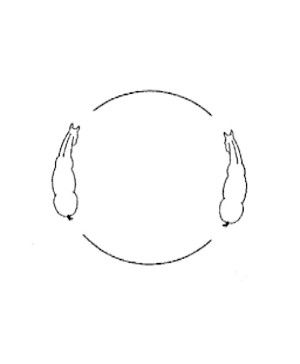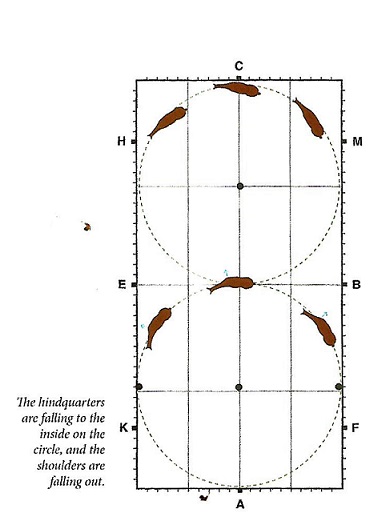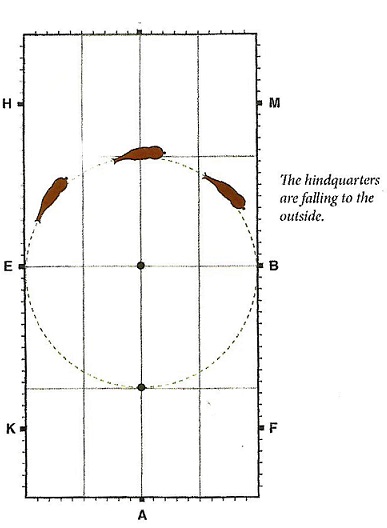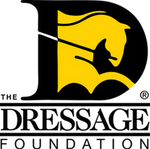Tom Noone: "The Purpose and Execution of the Warm Up"

The Purpose and Execution of the Warm Up
The purpose of the warm up is to supple the body and focus the mind of the horse, as well as to prepare the horse for the coming demands of the work. During the warm up, the rider should work to develop a balanced, willing horse that is increasingly on and between the rider’s aids. I like to begin the warm up with a minimum of 10 minutes of walking on a long rein to let the synovial fluid lubricate the horse’s joints, along with allowing a basic loosening of his muscles. This is also a good time for the horse to observe and become comfortable with his surroundings. During this time I expect the horse to stay marching forward with a swinging back and the most over-track possible at this stage in the ride. If he is not marching on his own, I test his reaction to my leg by giving a light aid and ensuring that he has a good response. Remember to reward the horse with a quick pat and/or verbal praise when he does respond correctly even at this early stage in the ride, it will help him to understand what you are asking for as well as help you to keep a happy and willing partner.
I always establish some sort of contact on the reins before moving into the trot, the degree of which varies from horse to horse. With a green horse, a very light and momentary feel on the reins before moving into the trot almost immediately is often helpful to reinforce forward thinking towards the contact. With a more trained horse, a more secure connection can be established, where the horse can be brought more between the aids before proceeding to the trot. Always keep in mind that the horse should be in front of and accepting of the rider’s leg, maintaining a clear desire to move forward and seeking an elastic contact at all times.
The horse should be trained to bend around the inside leg and reach into the outside rein. The connection from the inside leg to outside rein allows the rider to develop straightness and ride half-halts to bring the horse into better balance and help to develop collection later on. Straightness and alignment while bending the horse is crucial- a horse that is not truly straight cannot truly bend. The spine of the horse should be straight along the intended line of travel, whether on a straight or curved line, so that the hind hoof prints land in line with the front hoof prints.
The frame will be varied in the warm up depending on the type of horse, as well as what he may need on that particular day. In general, horses that tend to hold themselves in a tight manner or have shorter backs often tend to benefit from a warm up frame that encourages them to stretch forward and downward in the contact, allowing a lengthening of the frame and stride. Horses that are more naturally supple or possibly longer backed often benefit from a more gathered frame from the beginning. Of course, there are many variations in between those two types of horses, and therefore the rider must consider each horse as an individual and discover the most productive warm up frame for their horse.
When the basic rhythm, balance, and suppleness have been equally established on both sides in each gait, you should proceed to the next gait. The longer lines such as long sides and diagonals are helpful to encourage the horse to move forward and to help the rider to evaluate straightness. The bending lines such as large circles, serpentines, and figure eights require bend and therefore increase suppleness. Leg yields can also help to establish the inside leg to outside rein connection, as well as engage the horse by bringing the inside hind leg further underneath the body. Transitions between trot and canter and canter and trot, particularly on a 20 meter circle, are very beneficial to help supple the horse and bring him increasingly onto the rider’s aids. Subtle transitions between forward and back within all three gaits test the horse’s responsiveness to the rider’s driving and restraining aids, helping to fine tune the communication between horse and rider.
I consider the warm up to be completed when: the horses muscles are supple, his back is swinging in all three gaits, his mind is focused, he is bending equally from tail to poll on both sides, he is maintaining a proper thrust over his back and into the outside rein where small adjustments in his tempo and balance can be made in all three gaits, and I can make balanced transitions between the gaits. Some days, whether I’m riding a green horse where the work does not extend beyond the warm up, or if I am riding a Grand Prix horse, if this phase is not established to my liking it may become all that I work on that particular day. When the warm up phase has been well established, you will have created a foundation of reliable communication and understanding between horse and rider which is the basis for advancement.
A few other points to keep in mind:
• The intervals in trot and canter should not be too lengthy to help prevent fatigue and possible injury, as well as to allow the horse to mentally process the previous requests. Recognizing the right moment to give the horse a break is a crucial part of positive and successful training.
• Each time you ride your horse you are training him, so be mindful that you are consistent in your expectations of your horse’s suppleness and responsiveness on a daily basis.
• Horses learn through reward, so praise your horse when he gives you a response or feeling that you would like him to repeat.
• As often as possible, seek the help of a qualified professional to assist you and your horse on the road to success.
Tom Noone
USDF Gold, Silver and Bronze Medalist, Tom Noone is noted for his depth of knowledge, having trained more than fifteen horses to Grand Prix from beginning to end, encompassing a variety of breeds. He has represented the USA on three occasions, including the 2001 World Cup in Denmark, and holds a National title at every level of dressage.


